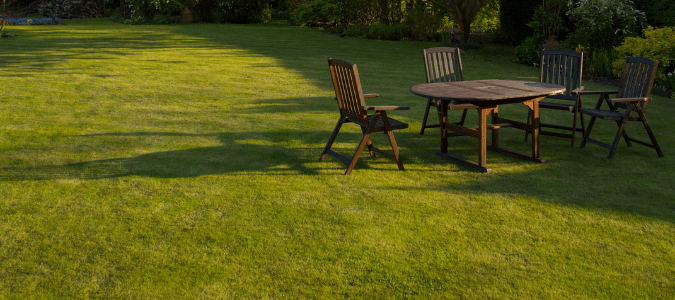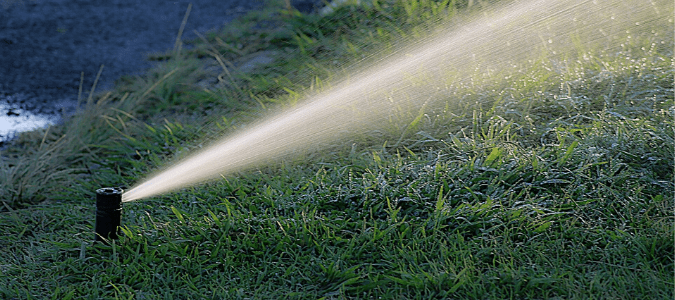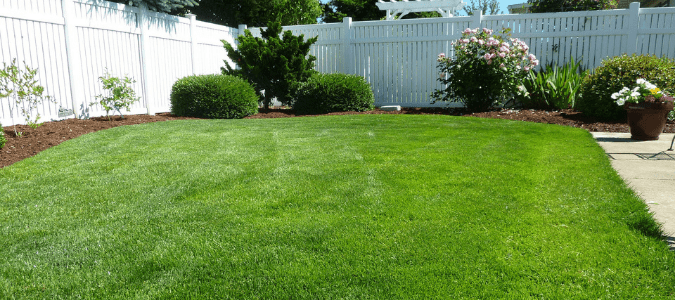Most homeowners would expect installing sprinklers to help their yard thrive in the summertime. Yet the wrong type of irrigation or too much water can damage your lawn. That is why it is important to learn more about sprinkler systems before making a major change to your yard’s irrigation.
Before you install a new sprinkler system, you will have to decide how many sprinklers per zone. Considering the different types of sprinkler heads and understanding the best times to run sprinklers will also help you make the right choice for your lawn.
Some homeowners feel confident enough to redo their sprinkler system on their own. However, it is often more convenient and affordable to consult a sprinkler repair company. Lawn care experts can help keep your yard looking great all year round, even in the heat of the summer.
Figuring Out How Many Sprinklers to Install
Many different factors come into play when deciding how many sprinklers to install per zone. While no solution will be right for every yard, considering these factors will help you irrigate your lawn properly.
Installing automatic sprinklers in your yard can save you a lot of time previously lost watering your lawn by hand. This system will run on a timer, which is scheduled to prevent water overuse and keep your water bill lower.
In-ground sprinklers that spray horizontally are the most effective at watering yards of any size. Other options include hose-end sprinklers for smaller yards and pulsating sprinklers, which are known to use more water.
Discovering Your Water Pressure
Each homeowner’s sprinkler system works differently because they are dependent on the water pressure of your particular home. If you do not have good water pressure, there could be an issue with your water pressure regulator. An average water pressure measurement for most sprinklers is 30 PSI (pounds per square inch).
It is not difficult to measure your home’s current water pressure, but you will need to buy or borrow a pressure gauge. Ensure that no other faucets are running in your house. Then you can measure your water pressure by screwing the gauge onto the faucet located nearest your water meter. Turn the faucet on, and the water pressure gauge will measure the pressure in PSI.
Contact your water provider or a sprinkler repair professional if you need help measuring your water pressure.
Figuring Out Your Water Flow
Another factor is learning how much water flow your sprinkler system can handle. After turning off other faucets, position a five-gallon bucket underneath the faucet and start a timer.
Multiply that 5 (for the gallons) by 60 (for seconds) and divide that by the number of seconds it took to fill up the bucket fully. The final number you calculate is the gallons per minute.
A zone is an area that has a specific watering need—more or less irrigation. The sprinkler heads will each have their own GPM. When you add up all those GPMs, divide that number by your home’s GPM. This final number is the number of zones you need to set up.
Types of Sprinkler Heads
Along with choosing the right amount of sprinklers per zone, it’s important to choose the right type of sprinkler head for your yard’s needs. From above-ground shrub nozzles to flood sprinkler heads, there are several options today.
To choose the right sprinkler head for your yard, you need to consider the spray pattern, water distribution and other features, such as your landscaping. The best way to determine the suitable types of sprinkler heads for your lawn is to consult with a sprinkler specialist.
Rotary Sprinkler Heads
Rotary sprinkler heads rotate in a circular motion to cover large areas. They use high water pressure and are known for their intense bursts of water. They can spray water in a single stream or multiple streams depending on your needs. Homeowners with large yards appreciate rotary sprinkler heads because they can cover a ton of ground in a targeted fashion.
Fixed Sprinkler Heads
Fixed sprinkler heads are ideal for smaller yards. Instead of rotating, they remain stationary and use strategic spray patterns. For example, a fixed sprinkler head may spray multiple streams of water in a half or full circle around the sprinkler.
Most fixed heads can be customized for your needs. For example, you can place a sprinkler on the edge of your driveway and set it to spray in a half-circle towards the grass so that your driveway doesn’t get wet. Fixed sprinkler heads are designed for compact areas, ground cover, and small shrubs.
Flood Sprinkler Heads
If your yard has trees or plants that need to be watered at the root level, a flood sprinkler head is a good option for you. Also known as bubble sprinkler heads, these sprinklers are designed to soak the soil. Instead of spraying water in an outward stream, the water flow of a flood sprinkler head looks more like a fountain.
Flood sprinkler heads cover a small area, typically five feet or less, and you can adjust the flow level to make sure you don’t overwater.
Multiple Stream Sprinkler Heads
Does your yard have uneven ground? A multiple stream sprinkler head can help ensure that your lawn gets watered evenly. These sprinkler heads shoot up several thin streams of water in a starburst shape. These systems offer an efficient way to use water and work well with medium-sized lawns.
Gear-Driven Sprinkler Heads
Gear-driven sprinkler heads are a type of rotary sprinkler. However, they spray water in a much more exact and even flow than other rotary sprinkler heads. If you’re looking for a precise and uniform water flow, a gear-driven sprinkler head is a great choice. They can cover a large amount of ground quickly and are ideal for big lawns.
Pop-Up Sprinkler Heads
Homeowners love pop-up sprinkler heads because they are indiscreet when not in use. As the name suggests, the sprinkler heads pop out of the ground when turned on and hide underground when turned off.
If you have a large yard and don’t want to obscure the view with several visible sprinkler heads, these heads are a great option. Plus, you don’t have to worry about a child, pet, or lawn mower tripping over the sprinkler head and hurting themselves or the sprinkler. However, you may run into the issue of your sprinkler heads not popping up.
Pop-up sprinkler heads are also highly customizable since most of them let you interchange the head. They are ideal for water coverage low to the ground.
Micro-Spray Sprinkler Head
For plants that are sensitive to overwatering, there are micro-spray sprinkler heads that use a gentle water flow to give them exactly what they need. These sprinkler heads use low water pressure and mist to create the micro-spray pattern.
Micro-spray sprinkler heads are ideal for garden beds with clay, as the low water pressure is better absorbed. This design also utilizes water more efficiently than stronger sprayers, resulting in less runoff of wasted water.
Shrub Sprinkler Heads
Instead of sitting at ground level, shrub sprinkler heads sit on a riser to better target dense gardens. Since they are elevated, they should be kept away from walkways where someone could easily trip. They are designed for areas with tall shrubs that are not as easy to access.
A professional can also advise you on which sprinklers may work best and can install your sprinkler system for you.
The Best Times to Run Your Sprinklers
Are you watering your lawn at the right time? You may not think that the time of day makes a difference, but it has a bigger impact than most homeowners realize. Watering at the proper time will make your watering more effective as you will waste less water to evaporation and lower the risk of your lawn growing fungus. It is one of the keys to keeping your lawn green in the summer heat.
Early morning hours are the best time to run your sprinkler system. Between the hours of 4 a.m. and 10 a.m., temperatures are at their lowest point of the day and there is less wind than at other times. This combination ensures the most water absorption since you don’t have to worry about water droplets evaporating in the heat or blowing away in the wind. That means that the water has a better chance to soak into the soil and feed your lawn and plants.
Watering your lawn in the early morning isn’t only better for your plants. Since water is used more effectively in the early morning hours, it’s a great environmental effort as well. You may even save money on your water bill since you are wasting less water. And, because you’re more efficiently watering your lawn, you may need to change how often you’re watering your lawn with your sprinkler system.
When Not to Water Your Lawn
Avoid watering your lawn in the hottest hours of the day. The heat will evaporate most of the water before it reaches the soil. In extreme heat waves, watering your lawn during the middle of the day can actually burn your grass.
You also shouldn’t water your lawn at night. Even though there is less heat, the dampness at night invites fungus to grow, which can spread devastating diseases throughout your yard.
ABC Can Make Sure Your Lawn Stays Green and Healthy
Take the guessing game out of taking care of your lawn and contact ABC Home & Commercial Services. Our pros can ensure your lawn stays healthy and green. We offer landscaping services as well, so you can have the yard you’ve been dreaming of.


